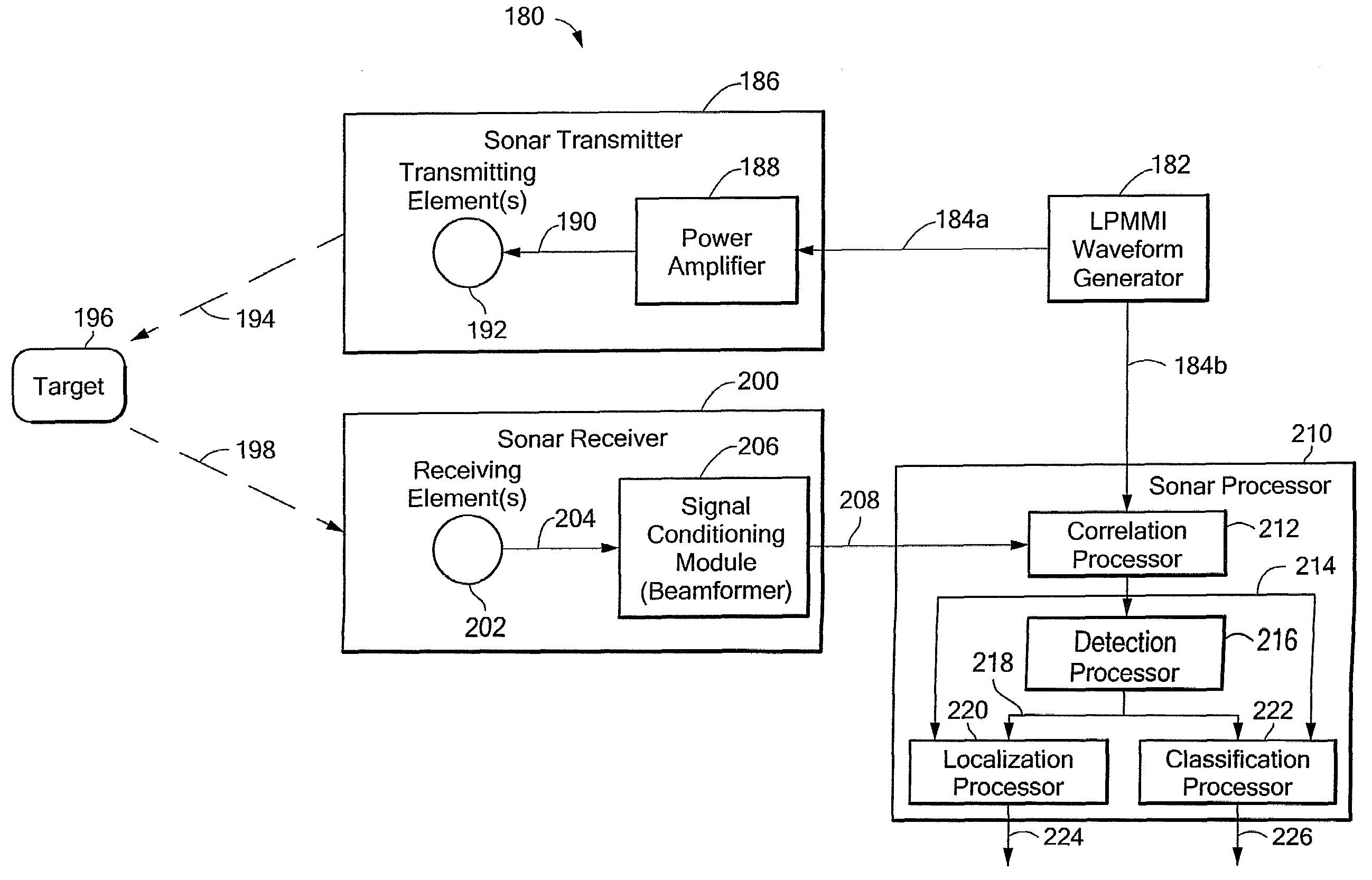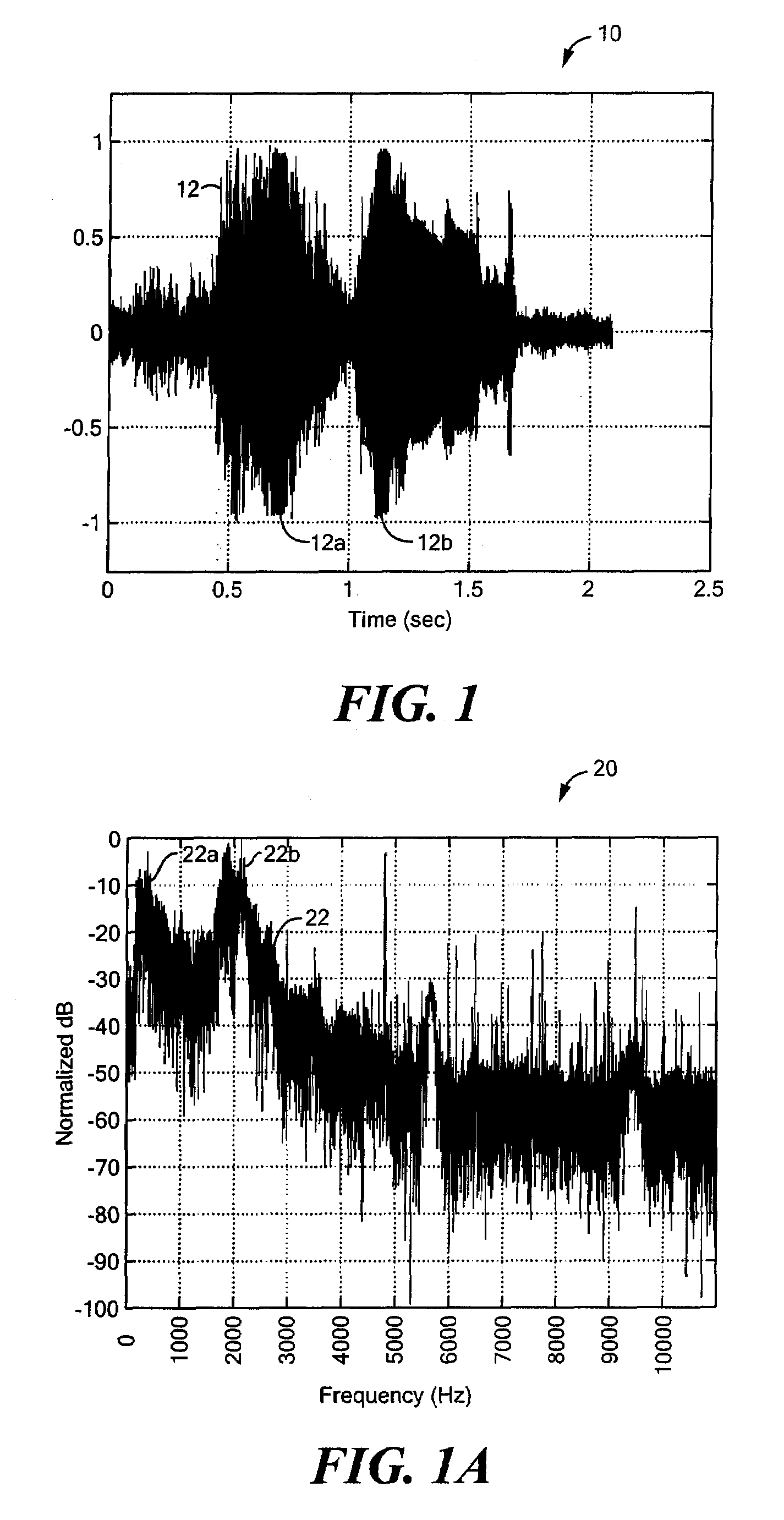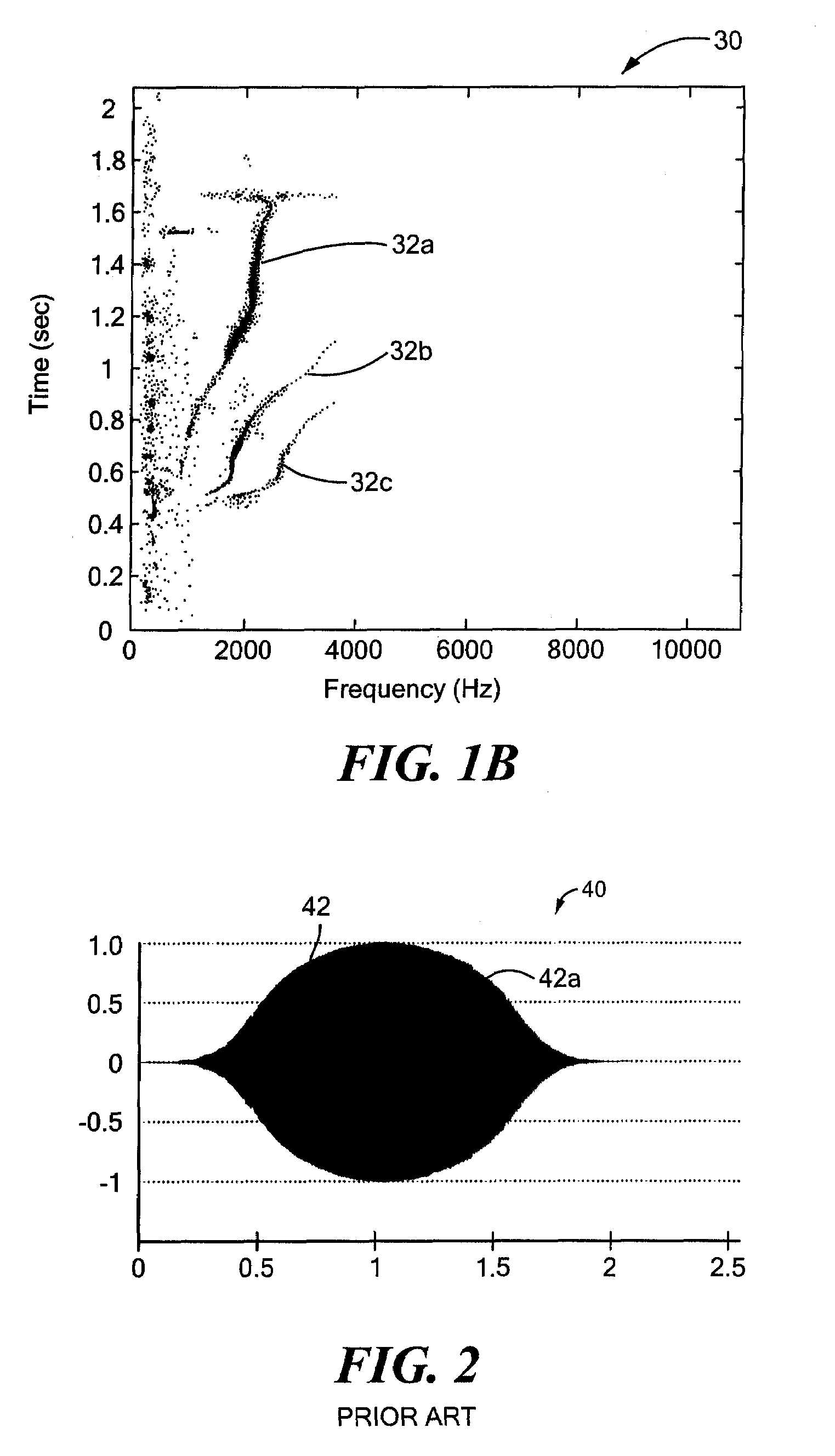Sonar system and method providing low probability of impact on marine mammals
a sonar system and low probability technology, applied in the field of active sonar systems and methods, can solve the problems of marine mammals being physiologically damaged, marine mammals being affected by tissue damage, and some marine mammals being killed, and achieve the effects of reducing behavioral responses, low probability of intercept (lpi), and low probability of marine mammal impact (lpmmi)
- Summary
- Abstract
- Description
- Claims
- Application Information
AI Technical Summary
Benefits of technology
Problems solved by technology
Method used
Image
Examples
Embodiment Construction
[0088]As used herein, the term “sound signal” is used to describe a pressure signal that can propagate in water. As used herein, the term “waveform” is used to describe a signal that can exist in a variety of media. For example, a waveform can be a voltage signal in an electronic circuit. For another example, a waveform can be a sound signal. The waveform and the sound signal can each have signal characteristics, which include, but are not limited to, a time duration (e.g., time duration of a pulse), a bandwidth, a center frequency, a magnitude or intensity, a modulation, and a frequency sweep rate. It will be apparent that an electronic waveform in an electronic circuit having particular signal characteristics can be used to generate an associated sound signal having the same or similar signal characteristics. Therefore, when discussing waveforms herein, it will be appreciated that the same or similar characteristics apply to an electronic signal represented by the waveform and to ...
PUM
 Login to View More
Login to View More Abstract
Description
Claims
Application Information
 Login to View More
Login to View More - R&D
- Intellectual Property
- Life Sciences
- Materials
- Tech Scout
- Unparalleled Data Quality
- Higher Quality Content
- 60% Fewer Hallucinations
Browse by: Latest US Patents, China's latest patents, Technical Efficacy Thesaurus, Application Domain, Technology Topic, Popular Technical Reports.
© 2025 PatSnap. All rights reserved.Legal|Privacy policy|Modern Slavery Act Transparency Statement|Sitemap|About US| Contact US: help@patsnap.com



